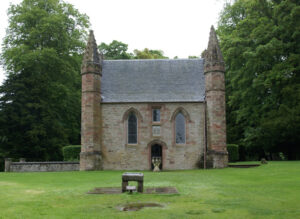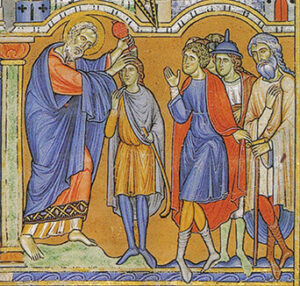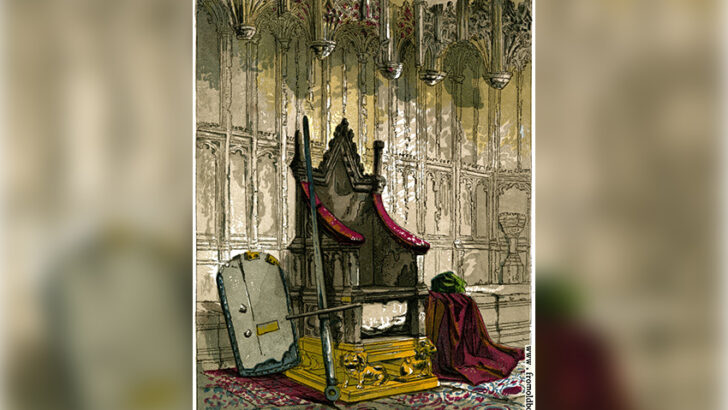When Elizabeth II passed away at Balmoral, her beloved Scottish home, in September last, my first thought on her son’s coming Coronation, was “What are they going to do about the Stone of Scone?”
This was the ancient inauguration stone of the Scottish nation. Having been removed from the royal site at the Moot Hill at Scone Palace in Perth, it was carried away by Edward I of England to London, where it was installed in the specially made Coronation Chair in Westminster Abbey. This was not a matter of loyal tribute from Scotland, but England wishing to humiliate a defeated nation.
Scotland
The last time I saw the stone was after it was returned to Scotland. Rather than being installed in some suitable church, as it had been in London, it was locked up in a steel room in Edinburgh Castle and left to the less than tender mercies of tour guides. It looks a rather sad and shabby object, all its ancient renown and luminousness quite vanished. A once sacred object had become merely a stage property in an intercultural drama.

Before it was brought to Scone in 843 by Kenneth Macalpine, it had been in the highlands of west Scotland. There it was surround by legends, or rather myths. It was installed at Dunadd, the capital of Dál Riada, the expanding kingdom of the invasive Irish, to whom Columcille came on a mission to spread Christianity.
In tradition the stone has become identified with the stone on which Jacob laid his head in sleep and dreamed of the angels coming and going between heaven and earth (Genesis, 28: 11-22). This was at Bethel, usually identified these days with Beitin on the West Bank.
However, the stone is of Old Red Sandstone, and an academic commission in recent years claimed that the stone is identifiable with all that underlies the Scone district.
In any case the stone was never claimed in legend to be of Scottish origin at all. Though said to have originated at Bethel, the geology around Bethel is limestone.
It was claimed in Irish tradition that the stone was brought from Ireland by one of the leaders of the invasion of Scotland (which eventually wiped out the Picts).
It was then identified with the Lia Fáil, the Stone of Destiny, which I discussed here a few weeks ago. Irish archaeologists and historian, needless to say, have no patience at all with this “farrago of nonsense”. For them since the days of George Petrie in the 1830s the Lia Fàil remained at Tara.
But what did become of the Lia Fáil, which at one time it is accepted by all was indeed at Tara. A stone presently called the Lia Fàil on the Hill of Tara is no such thing, as I discussed recently in these pages.
But an Irish tradition of an acceptable kind, in a passage of an ancient text, the Acallam na Senórach, that the Lia Fàil “was carried away by a hero”, and taken out of Ireland into Scotland by the invaders spreading new rule over the new conquest. Irish tradition claimed it had been brought into Ireland itself by Princess Scotia, who landed in Kerry from Egypt, but whose name survives in the medieval name of Ireland and Scotland.
This is the legend, and it would take far more than a brief article to expound it. It would take a book. But readers will have to wait for that…
Special occasion
The Coronation on Saturday May 6, will be a special occasion, for several reasons. It is so long since the last coronation, of Elizabeth II back in 1953, that what will be displayed will be a rite strange to most of the viewers.
But the Coronation has several important aspects. The ceremony is basically a ritual of inauguration, certainly of some antiquity, inserted into an Anglican Communion service, basically into a form of the medieval communion service which those of the Catholic tradition will recognise.
Archbishop
From the point of view of the Archbishop of Canterbury, who seems to have been slightly at odds with King Charles over his innovations to the established service, the most important part of the service lies, not in the use of an ancient chair, or even in the use of the Stone of Scone, or even placing the crowns on the heads of the King and Queen.
No: the religious heart of the coronation for Christians, lies in the anointing of the King and his spouse with holy oil, acts that take place now shrouded in privacy.
This act can be traced back over some 3,000 years through the anointing by Columcille of Aidan King of Argyll supposedly seated on the Coronation Stone, circa 574. Behind this lay the use of holy oil in the coronation of the fourth Merovingian king Clovis I in 465. But the origin of this rite, which consecrates the king as one of God’s anointed, is the selection in secret of David, then a mere shepherd boy, by Saul, who poured oil out on his head. This was about 1000BC (see I Samuel 16: 12-13).

To devout Anglicans and some other Christians the ceremony on Saturday partakes of a divine injunction certified by the Bible. But in the complicated religious life of modern Britain the acceptance of this presents a challenge to many.
Ideals
The best current account of the ideals of the British coronation remains Coronation: A History of Kingship and the British Monarchy (Harper Collins, £25.00/€29.00) by Roy Strong, the distinguished art historian. This truly magnificent volume replaces a much earlier book of quality, Monarchy by Sir Harold Nicolson, the diplomat and litterateur, which was more political than cultural.
Roy Strong in fact was the High Bailiff of Westminster Abbey and Searcher of the Sanctuary down to 2019, so he had devoted much research to all aspects of the ceremony and the history of its venue over the centuries. He creates a rich tapestry of facts, with little speculation. It is altogether a wonderful book; but then not everyone these days is interested in monarchy today.


 Peter Costello
Peter Costello The Coronation Chair in Victorian times.
The Coronation Chair in Victorian times. 